Iran- art&design 2018year
Iran
officially the Islamic Republic of Iran, with over 81 million inhabitants, Iran is the world’s 18th-most-populous country.It is the second-largest country in the Middle East and the 17th-largest in the world.
Iran is home to one of the world’s oldest civilizations, beginning with the formation of the Elamite kingdoms in the fourth millennium BCE. It was first unified by the Iranian Medes in the seventh century BCE, reaching its greatest territorial size in the sixth century BCE, when Cyrus the Great founded the Achaemenid Empire, which stretched from Eastern Europe to the Indus Valley, becoming one of the largest empires in history.
The Iranian realm fell to Alexander the Great in the fourth century BCE and was divided into several Hellenistic states. An Iranian rebellion culminated in the establishment of the Parthian Empire, which was succeeded in the third century CE by the Sasanian Empire, a leading world power for the next four centuries.
Arab Muslims conquered the empire in the seventh century CE, displacing the indigenous faiths of Zoroastrianism and Manichaeism with Islam. Iran made major contributions to the Islamic Golden Age that followed, producing many influential figures in art and science.





Shiraz is the fifth-most-populous city of Iran and the capital of Fars Province (Old Persian as Pars).Shiraz is known as the city of poets, literature, wine (despite Iran being an Islamic republic), and flowers.
The crafts of Shiraz consist of inlaid mosaic work of triangular design; silver-ware; pile carpet-weaving and weaving of kilim, called gilim and jajim in the villages and among the tribes.The city’s municipality and other related institutions have initiated restoration and reconstruction projects.
Some of the most recent projects have been the complete restoration of the Arg of Karim Khan and of the Vakil Bath, as well as a comprehensive plan for the preservation of the old city quarters. Other noteworthy initiatives include the total renovation of the Qur’an Gate and the mausoleum of the poet Khwaju Kermani, both located in the Allah-u-Akbar Gorge, as well as the restoration and expansion of the mausoleum of the famous Shiraz-born poets Hafiz and Saadi.




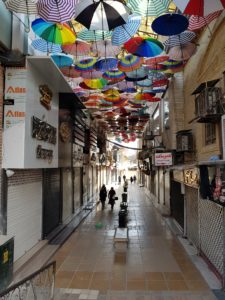
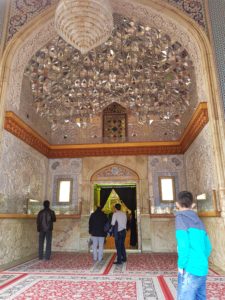








Eram Garden is a historic Persian garden in Shiraz, Iran. The garden, and the building within it, are located at the northern shore of the Khoshk River in the Fars province.
Both the building and the garden were built during the middle of thirteenth century by the Ilkhanate or a paramount chief of the Qashqai tribes of Pars.
Over its 150 years the structure has been modified, restored or stylistically changed by various participants. It was one of the properties of noble Shiraz Qavami Family.
The building faces south along the long axis. It was designed by a local architect- Haji Mohammad Hasan.
The structure housed 32 rooms on two stories, decorated by tiles with poems from the poet Hafez written on them. The structure underwent renovation during the Zand and Qajar dynasties.
Qavam House, “Narenjestan e Ghavam” –at Eram Garden is a traditional and historical house. It was built between 1879 and 1886 by Mirza Ibrahim Khan. The Qavam family were merchants originally from Qazvin. But they soon became active in the government during the Zand dynasty, followed by the Qajar, and Pahlavi dynasty as well.
The Qavam “Naranjestan” preserves the elegance and refinement enjoyed by the upper-class families during the 19th century.
The paintings on the low ceilings of the house are inspired by Victorian era Europe. The mirrored porch was a focal point of the house, overlooking a small garden that was designed with fountains, date palms, and flowering plants
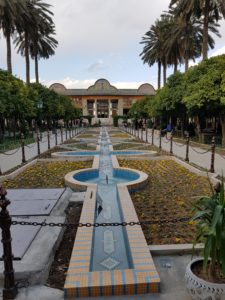


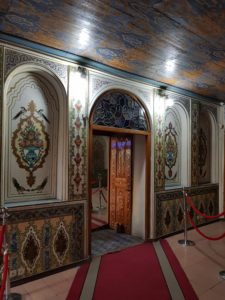


The Nasir al-Mulk Mosque also known as the Pink Mosque, is a traditional mosque in Shiraz, Iran. It was built under Qajar rule of Iran.
The mosque includes extensive colored glass in its façade, and displays other traditional elements such as the Panj Kāse (“five concaved”) design. It is named in popular culture as the ‘Pink Mosque’, due to the usage of considerable pink color tiles for its interior design.


Vakil Bazaar is the main bazaar of Shiraz, Iran, located in the historical center of the city.

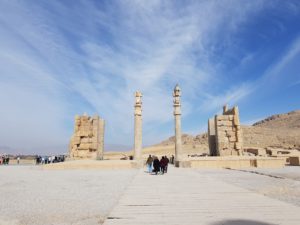


Persepolis was the ceremonial capital of the Achaemenid Empire (ca. 550–330 BC). It is situated 60 km northeast of the city of Shiraz in Fars Province, Iran.
The earliest remains of Persepolis date back to 515 BC. It exemplifies the Achaemenid style of architecture. UNESCO declared the ruins of Persepolis a World Heritage Site in 1979.Persepolitan architecture is noted for its use of the Persian column, which was probably based on earlier wooden columns. Architects resorted to stone only when the largest cedars of Lebanon or teak trees of India did not fulfill the required sizes.


Column bases and capitals were made of stone, even on wooden shafts, but the existence of wooden capitals is probable.
The buildings at Persepolis include three general groupings: military quarters, the treasury, and the reception halls and occasional houses for the King. Noted structures include the Great Stairway, the Gate of All Nations, the Apadana, the Hall of a Hundred Columns, the Tripylon Hal l and the Tachara, the Hadish Palace, the Palace of Artaxerxes III, the Imperial Treasury, the Royal Stables, and the Chariot House.
Pasargadae was the capital of the Achaemenid Empire under Cyrus the Great who had issued its construction (559–530 BC);it was also the location of his tomb.
It was a city in ancient Persia, located near the city of Shiraz (in Pasargad County), and is today an archaeological site and one of Iran’s UNESCO World Heritage Sites.
Yazd
The capital of Yazd Province, Iran. The city is located 270 km (170 mi) southeast of Esfahan. At the 2011 census, the population was 529,673, and it is currently 15th largest city in Iran. Since 2017, the historical city of Yazd is recognized as a World Heritage Site by UNESCO.
Because of generations of adaptations to its desert surroundings, Yazd has a unique Persian architecture.
It is nicknamed the “City of Windcatchers” from its many examples. It is also very well known for its Zoroastrian fire temples, ab anbars (cisterns), qanats (underground channels), yakhchals (coolers), Persian handicrafts, handwoven cloth (Persian termeh), silk weaving, Persian Cotton Candy, and its time-honored confectioneries.
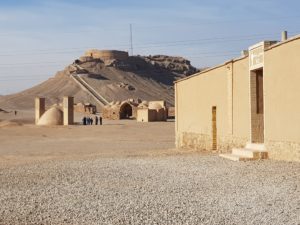

A Dakhma , also called a Tower of Silence, is a circular, raised structure built by Zoroastrians for excarnation – that is, for dead bodies to be exposed to carrion birds, usually vultures. Zoroastrian exposure of the dead is first attested in the mid-5th century BC Histories of Herodotus, but the use of towers is first documented in the early 9th century CE.
156–162 The doctrinal rationale for exposure is to avoid contact with Earth or Fire, both of which are considered sacred in Zoroastrian religion.
The modern-day towers, which are fairly uniform in their construction, have an almost flat roof, with the perimeter being slightly higher than the center. The roof is divided into three concentric rings: the bodies of men are arranged around the outer ring, women in the second circle, and children in the innermost ring.
Once the bones have been bleached by the sun and wind, which can take as long as a year, they are collected in an ossuary pit at the center of the tower, where – assisted by lime – they gradually disintegrate, and the remaining material – with run-off rainwater – runs through multiple coal and sand filters before being eventually washed out to sea.
The ritual precinct may be entered only by a special class of pallbearers, called nusessalars, a contraction of nasa. salar, caretaker (-salar) of potential pollutants (nasa-).
Zoroastrian fire temples
A fire temple in Zoroastrianism is the place of worship for Zoroastrians, often called dar-e mehr (Persian) or agiyari (Gujarati). In the Zoroastrian religion, fire (see atar), together with clean water (see aban), are agents of ritual purity.








Maharloo Lake , also known as Daryache-ye-Namak is a seasonal salt lake in the highlands of the area of Shiraz, Iran.







